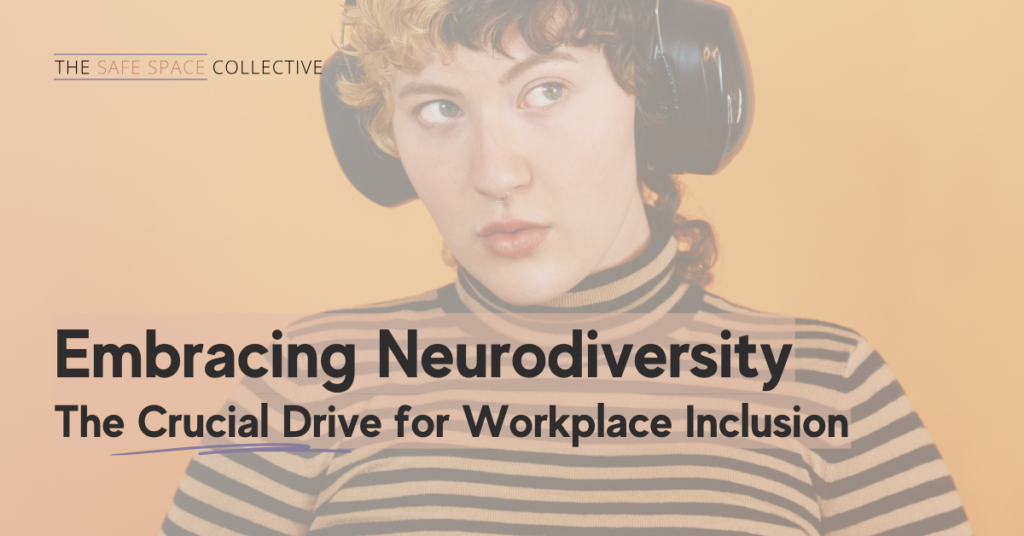Today’s best leaders understand the importance of providing employees with a supportive, safe space to work. And with a growing neurodivergent workforce, this includes a better understanding of autism in the workplace.
Whether you have Autistic team members who have disclosed their condition to you or you want to ensure you’re creating an environment where everyone can work comfortably and capably, this article can help. With the help of Neurodivergent Advocate April Lea, we share some strategies to create an autism-friendly workplace and ensure that every member of your team can perform their best.
The stats about autism in the workplace
Embracing neurodiversity means recognising there’s more than one way for the human brain to work. And with autism being a common neurodivergent condition, it’s something we must start acknowledging in the workplace.
Autism is recognised as a disability, so Autistic individuals have certain rights covered under the Disability Discrimination Act 1992 (DDA). This means they can make reasonable requests for adjustments that help them work comfortably and effectively, ensuring adults with autism in the workplace are embraced and supported.
With an estimated one in 70 Australians on the autism spectrum, employers and leaders need to recognise that even the most minor adjustments or recognitions can ensure that autism discrimination in the workplace doesn’t occur.
So, how can you identify employees that might be Autistic? Unless they’ve specifically disclosed their condition to you, you can’t. But as a condition that often goes undiagnosed into adulthood, someone in your team might exhibit signs of autism in the workplace that could indicate they have the condition. These signs include:
- Heightened attention to detail. “Someone that’s really pedantic or has a strong attention to detail, almost to the point where you feel annoyed with how many questions they ask, could be a sign of autism,” April says.
- Sometimes socially unaware. “Being quite blunt or seemingly unaware of how they’re coming across socially could be another sign,” April says. “They might say something inappropriate or behave in a way you wouldn’t expect in the workplace, like if they dress differently.”
- Specific preferences. Sometimes, you can identify adults with autism in the workplace by their particular preferences. According to April, this could look like someone always sitting in a very specific part of the office.
Whether your employees have disclosed their neurodivergence to you or not, it’s your role as a leader to create a workplace where people feel included and considered — and that includes your neurodivergent staff.

How does autism discrimination in the workplace occur?
One of the biggest challenges at work for Autistic individuals can be feeling as though they’re excluded or different, ultimately leading to discrimination. “You might notice that your employee is trying to adjust their behaviour to fit in,” April says. “It’s common for Autistic people to try everything possible to feel like they fit in and aren’t the odd one out.”
This can feel stressful and overwhelming, and it is just one element of autism in the workplace that needs to be explored. As their leader, manager or HR representative, it’s your job to ease these feelings of stress.
According to April, the most effective way to do this is to ensure all employees have an understanding of autism. “Autism isn’t an excuse but an explanation,” she says. “And it’s about understanding on both sides. So, educating your entire team on autism in the workplace and what it means for their neurodivergent co-workers can be hugely beneficial.”
Beyond education, what else can you do to ensure an autism-friendly workplace? Let’s explore a few ideas.
Creating an autism-friendly workplace
All organisations benefit from diversity. This includes having neurodivergent members. For organisations and teams, there are several benefits of having autism in the workplace. Autistic employees often show great attention to detail, are creative thinkers and love to be innovative.
To ensure everyone feels comfortable and capable of working their best — including your Autistic team members — these strategies can help.
- Give clear instructions. You should provide as much information as possible when discussing requirements, projects or tasks. “Don’t leave any room for ambiguity,” April says. “Give additional details, and don’t be vague about your expectations.”
- Ensure everyone understands. As mentioned earlier, educate your entire team about autism and neurodiversity so that Autistic individuals don’t have to expend their energy trying to filter or change their behaviours. “It’s about helping everyone understand how each other communicates so they don’t feel offended or misunderstand what they’re trying to say,” April says.
- Make reasonable adjustments. Speak to your neurodivergent employees and find out if there are any autism accommodations you can make to help them work better. These could include noise-cancelling headphones, a permanent desk in a separate area, or the option to adjust meeting attendance requirements.
- Reach out to Safe Space for help. We are the link between your neurodiverse workforce and your organisation, ensuring that autism is embraced and your employees are supported. And we’ve got a range of resources, tools and services to make that connection easier.

Take the first steps towards embracing autism in the workplace
Your Autistic staff can bring many benefits to the workplace, and ensuring they feel safe, supported and included is vital to their success. The Safe Space Collective is here to help you get started, so sign up for a free trial and implement a plan that will embrace neurodiversity in your workplace.



